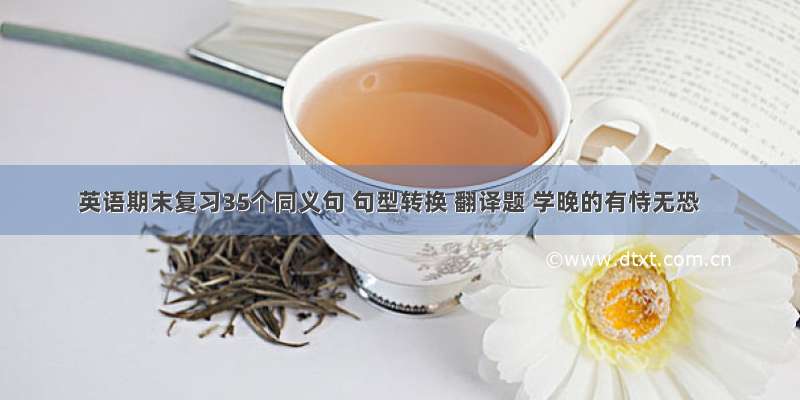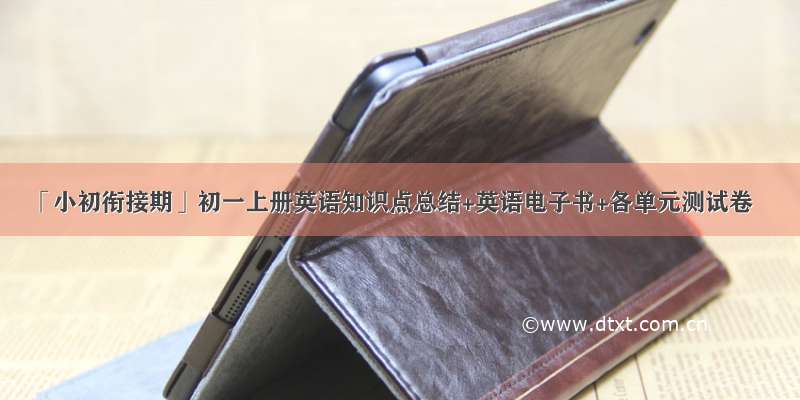
1. Tom is in Grade Seven, Class Six.
2. It not is my bag.
3. I am in Class five..
4. -Are you Liu Fang?-No, I amn’t.
5. What are eight and six?
6. -How old is Bill? -He eleven.
7. I’m in No. 4 middle school.
Bill and I am at school.
This is our teacher. We love she very much.
There is a big apple in the tree.
Can you see a pen in picture 1? Yes, I do.
Where are my photoes? Can you see them? Excuse me, I can’t.
The pen in the case.
What’s color is it?
I’m ok,thank you.
I ,you and he are good friends.
You ,I and he are bad boys.
How about book?
this is my a book.
Tom’s that book is next to mine.
Spell it please.
Sorry,can you spell the word?
Do you be a teacher?
Please call me 13501243349.
Gina in the tree.
He is Ou yan nan.
Thank for your greeting letter.
Here are you. Here Tom is.
These are a pen, a book, a case.
Is this pencil?
Is that a set keys?
He doesn’t plays sports.
She can’t watches TV.
let’s play the basketball.
That sounds well.
Stands up,please.
Mine book is yellow,she book is red.
They are tomatos,keies,watchs,strawberrys and sheeps.
Good morning=
What’s this in English?=
What color is the pen?=
What is the phone number?=
Can you spell it?=
How are you? I am fine,thanks. How are you?=
My name’s Gina.=
a photo of my family=
first name=
48. last name=
49.He mother is I aunt.
50.She teaches our English.
be 的用法口诀我用am,你用are,is连着他,她,它;
单数名词用is,复数名词全用are。
变疑问,往前提,句末问号莫丢弃。
变否定,更容易,be后not莫忘记。
疑问否定任你变,句首大写莫迟疑。
基数词变序数词歌基变序,有规律词尾加上-th(fourth,sixth) 的一、的二、的三,特殊例,
结尾字母t,d,d(first,second,third)
八去t,九去e,(eighth,ninth)
ve要用 f替;(fifth,twelfth)
ty将y改成i,
th前面有个e。
若是碰到几十几,
前用基来后用序。
时间名词前所用介词的速记歌
年月周前要用in,日子前面却不行。
遇到几号要用on,上午下午又是in。
要说某日上下午,用on换in才能行。
午夜黄昏须用at,黎明用它也不错。
at也用在时间前,说“差”可要用上to,说“过”只可使用past,多说多练牢牢记,
莫让岁月空蹉跎。
f(e)结尾的名词复数ves
妻子wife持刀knife去宰狼wolf,小偷thief吓得发了慌; 躲在架后shelf保己self命life,半片half树叶leaf遮目光。
冠词用法歌诀
单数名词前,可用 a或an; 泛指某一类,用法记心间;
辅音前用a,元音前用an; a, an不特指,特指用定冠(the);
泛指复数前,冠词多不便; 碰到代词时,我们不出现。词组短语中,特殊记心间
1. Tom is in Class Six ,Grade Seven.
2. It is not my bag.
3. I am in Class Five..
4. -Are you Liu Fang?-No, I ’m not.
5. What is eight and six?
6. -How old is Bill? -He is eleven.
7. I’m in No. 4 Middle School.
Bill and I are at school.
This is our teacher. We love her very much.
There is a big apple on the tree.
Can you see a pen in picture 1? Yes, I can.
Where are my photos? Can you see them? Sorry, I can’t.
The pen is in the case.
What color is it?
I’m OK,thank you.
You , he and I are good friends.
I ,You and he are bad boys.
How about the book?
This is my book.
Tom’s book is next to mine.
Spell it ,please.
Excuse me,can you spell the word?
Are you a teacher?
Please call me at 13501243349.
Gina is in the tree.
He is Ou Yannan.
Thanks(Thank you) for your greeting letter.
Here you are. Here is Tom.
These are a pen, a book and a case.
Is this a pencil?
Is that a set of keys?
He doesn’t play sports.
She can’t watch TV.
let’s play basketball.
That sounds good.
Stand up,please.
My book is yellow,her book is red.
They are tomatoes,keys,watches,strawberries and sheep.
Good morning=Morning.
What’s this in English?=What’s the English for this?
What color is the pen?=What is the pen’s color?
What is the phone number?=What number is the phone?
Can you spell it?=Spell it, please.
How are you? I am fine,thanks. How are you?=I’m OK,thank you.And you?
My name’s Gina.=I’m Gina.
a photo of my family=my family photo.
first name=given name.
last name=family name.
His mother is my aunt.
She teaches us English.
将肯定句改否定句口诀:
否定句子这样改,not快点加上来。要问not哪里加,be和情态后面呆。两者都无求帮助。
do和does加上来。看清主语和动词,三单主语用does。用了does别忘记,动词快点改过来。
如果还有some在,就用any换过来。
将陈述句改一般疑问句口诀:
一提二改三问号,一般疑问这样改。无法移动求帮助。do和does加上来。看清主语和动词,
三单主语用does。用了does别忘记,动词快点改过来。
(一提:将be动词、情态动词前置。二改:将some改成any,第一人称改成第二人称。)
句型转换歌
一般疑问最简单,be动情助移最前;
肯变否定有规则,be情助后加not,
实动前面加don"t,遇到some改any;
单变复数要对应,复变单数不忘a/an;
划线提问要分析,划啥就用啥来填。
句型转换小case,我有方法定能行!
(划“什么”,用what;划“谁”就用who;划“谁的”,用whose;划数量,用how many;划价钱用how much;划身体要用how;划修饰语要用which;划地方就用where。)
注:be情助,分别指be动词、情态动词(如can may…)和助动词(…)
名词单数变复数口诀
(一) 规则变化
名词单数变复数,直接加 -s 占多数;
s, x, z, ch, sh 来结尾,直接加上 -es;
词尾是 f 或 fe,加 -s 之前先变 ve;
辅母 + y 在词尾,把 y 变 i 再加 -es;
词尾字母若是 o,常用三个已足够,
要加 -es 请记好,hero, tomato, potato。
(二) 不规则变化
男人女人 a 变 e,鹅足牙 oo 变 ee;
老鼠虱婆也好记,ous 变 ic;
孩子加上 ren,鱼鹿绵羊不用变。
【解说】
英语名词有单数和复数的区别,单数表示“一”,复数表示“多于一。”名词由单数变复数,多数是规则的变,直接加 -s,例如:book → books, girl → girls。但以 -s, -z, -x, -ch, -sh 结尾的名词,变成复数时加 -es,例如:bus → buses, buzz → buzzes, box → boxes, watch → watches, brush → brushes2. -f(e) 结尾的名词单数变复数歌诀:
① 树叶半数自已黄,妻子拿刀去割粮,架后窜出一只狼,就像强盗逃命忙。
② 妻子持刀去宰狼,小偷吓得发了慌,躲在架后保己命,半片树叶遮目光。例如:leaf (树叶,叶子),half (一半),self (自已),wife (妻子),knife (刀子),
shelf (架子),wolf (狼), thief (窃贼,强盗) 和 life (生命),这些名词变成复数时,都要改 -f (e) 为 v,再加 -es。
3. -f 结尾的名词直接加 -s 变复数歌诀:海湾边、屋顶上,首领奴仆两相望;谁说他们无信仰,证据写在手帕上。例如:gulf, roof, chief, serf, belief, proof, handkerchief,这些名词变复数直接加 -s。
注:scarf(围巾;披风) 可以先改 f 为 ve 再加-s,也可直接加 -s。
4. 辅音字母 + y 结尾的名词,把 y 变 i 加 -es。例如:baby → babies, country → countries, family → families;而 -y 前是元音时,-y 不变,直接加 -s。例如:day → days, boy → boys
5. 以 -o 结尾的名词变复数时,多数直接加 -s。例如:radio → radios, piano → pianos, kangaroo → kangaroos;有的须加 -es,
中学课本中有几个这样的单词,
可以通过一句口诀来记忆:黑人英雄爱吃西红柿和土豆。即:Negro → Negroes, hero → heroes, tomato → tomatoes, potato → potatoes;有的以 o 结尾的名词既可加 -s 也可加 -es。例如:volcano (火山) → volcanos / volcanoes 等。
6. 名词复数的不规则变化需要特别记忆。例如:man → men, woman → women, goose → geese, foot → feet, tooth → teeth, mouse → mice, louse (虱子) → lice, child → children, fish → fish, deer (鹿) → deer, sheep → sheep 等。
7.初中课本中表示“某国人”的名词复数形式变化可通过歌诀记忆:中日不变英法变,其余 -s 加后面。例如:Chinese → Chinese, Japanese → Japanese;Englishman → Englishmen, Englishwoman → Englishwomen, Frenchman → Frenchmen, Frenchwoman → Frenchwomen;American → Americans, Rusian → Rusians, Arab → Arabs, German → Germans 等。
8. 不可数名词一般只有单数形式,没有复数形式。有些不可数名词可借助单位词表示一定的数量。例如:a cup of tea 一杯茶, two pieces of paper 两张纸, an item of news 一则新闻。
句型变化很简单, / 先把句中动词看:/ be may must will can,/ 否定句not加后边。/ 一般问句也不难,/ 助情动词放句前;/ 两种回答yes no,/ 句首动词人后面。/ 没有现成怎么办?/ do does did来相伴,/ 三单式过去要还原。/ 特殊问句更简单,/ 疑问词后跟一般 。/ 事物职业等what,/ who人where问地点,/ whose谁的所有权。/ 数量how many复后边,/ how much不可数和价钱。/ why问原因慢慢谈,/ what time when时间, / how old岁数多少年?/ how be人身永康健!
一般现在时中实义动词的变化规律口诀
我们在学习一般现在时的时候接触了两种动词,一种是连系动词be (am / is / are ) ,其用法比较简单;另外一种是实义动词。不同句子中的实义动词会有变化,有时还出现不同的助动词。现将其编成口诀的形式,希望能够方便同学们的学习和记忆。
实义动词现在时,肯定句中两形式。
主语单三动词变,除此之外莫变换。
否定疑问不麻烦,助动词必须出现,
主语单三要用does,其余主语do 替换,
以上两句动用原。特殊情况总会有,
主定提问动单三, do, does此时看不见。
具体解释如下:
I. 在一般现在时的肯定句中,当主语是第三人称单数时,实义动词要变成第三人称单数。若主语不是第三人称单数时,实义动词则不发生变化。如:
1. My mother often makes cakes for us.
2. They speak English every day.
II. 在一般现在时的否定句或一般疑问句中要出现助动词。若主语是第三人称单数,助动词用does;若主语不是第三人称单数,助动词用do。如:
1. Do you love your school?
2. He doesn"t go to school by bike.
III. 在一般现在时的否定句或一般疑问句中,无论主语是第几人称,单数还是复数,实义动词都用原形。如:
1. Han Mei doesn"t like milk at all.
2. Does he speak English?
3. Do you have an eraser?
特例:主语不明确的情况下,在对句子的主语或主语的定语进行提问时,句子中不出现助动词,谓语动词通常用第三人称单数形式。如:
—Who teaches you English?
—Li Lei does.














